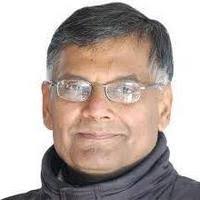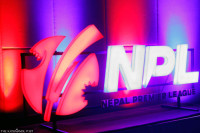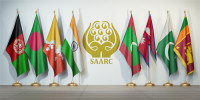Opinion
Saarc on life support
India may not be willing to end the experiment, but it’s unlikely to help in the revival of the grouping.
CK Lal
Biratnagar—up till the mid-1970s, school textbooks described this town as the industrial capital of Nepal. The other identifier given to the settlement was equally illustrious. By virtue of being the hometown of the Koiralas, it was assumed to be the psychological headquarters of oppositional politics throughout the Panchayat Era. The Koirala Niwas, referred merely as Niwas by its regulars, turned into a spiritual destination of sorts for the supporters of Nepali Congress after the restoration of parliamentary democracy.
Times have changed. And so has the ground reality. The Simra-Birgunj or Butwal-Bhairahawa corridors hum with more industrial activity than the Ithari-Biratnagar belt. The glory days of the Niwas ended with the passing away of Girija Prasad Koirala. The town is no longer the stronghold of Congress supporters. But there is a metaphor in Hindi, which, when translated roughly into English goes, ‘the rope got burnt but the twists remain’.
The local chatterati seem to be unaware that since the promulgation of the controversial constitution, the distinction of being the centre of alternative politics has shifted to Janakpur. Koirala loyalists still aver that the preeminence of Shekhar-dajyu in their party is merely a matter of time. Self-important apparatchiks of what was once known as the Communist Party of Nepal (United Marxist-Leninist) never fail to mention that they have Sushil Pyakurel and Bishnu Rimal, advisors to President Bidya Bhandari and Prime Minister Khadga Prasad Sharma Oli respectively, on their speed-dial.
Casual conversations in town invariably veer towards Nepal’s place in the foreign policy of re-elected Indian Prime Minister Narendra Modi. Cutting across the party line, there seems to be a consensus that premier Modi will be more considerate towards Nepal in his second term. The appointment of Subrahmanyam Jaishankar seems to have generated hope among some Madheshi politicos while causing apprehensions among many Khas-Arya movers and shakers.
An obsession with foreign policy is characteristic to all aid- or remittance-dependent countries. Perhaps Kathmandu has more external relations experts per square kilometre than almost any other country in South Asia! Retired diplomats and sequestered politicos of the Panchayat era consider world affairs to be their natural domain. Former employees of donor agencies, out-of-commission development consultants, up and coming journalists and ambitious academics believe that commenting upon global issues is a surefire way of earning professional credibility.
Anxiety disorder
Back in Kathmandu, the ‘Oliars’ and the ‘Jhamel Cluster’, counterparts of the bhakts and the Khan Market Gang of New Delhi respectively, have little else to discuss. For the Oliars, the railway to international glory can only trundle through the Kathmandu-Kerung trans-Himalayan line. The Jhamel Cluster, or just JCs for short, seems to hold that the USA is still capable of doing what it hasn’t been able to do in seven decades of close bilateral relationship: Magically lift Nepal out of poverty through financial and technical assistance. If none of those assumptions work, the blame can easily be hurled at the supposedly ‘anti-Nepal’ conspirators in New Delhi.
Contrary to the commonly held beliefs of Oliars and JCs alike, Kathmandu probably blips on the South Block radar only when unmarked limousines with previously unseen diplomats begin to make frequent trips between Baluwatar, Pulchowk, Satdobato, Jhamsikhel, Naxal and Budhanilkantha at unusual hours—as it happened to precede the 16-Point Conspiracy. The-then Indian foreign secretary S Jaishankar may have miffed some puffed up politicos of Kathmandu with his demeanour in 2015, but as the external affairs minister of the second most populous country in the world, he will have his plate full with other concerns to worry too much about a conceited neighbour.
It may be daunting to prepare an exhaustive list, but the amalgam of acronyms, abbreviations and portmanteau terms that has come to signify India’s relationship with the post-1990 world order is bewildering, to say the least. The BRICS is an experiment in building a multi-polar world. The Quadrilateral Security Dialogue (better known as QSD or simply Quad) on the other hand, appears to be seeking to re-strengthen unipolar dominance in geopolitics.
India’s presence at the Shanghai Cooperation Organisation (SCO) is an attempt to engage with China, whereas the Indo-Pacific strategy seems to be designed to counter Beijing. There is a reason Premier Modi decided to go with the Bay of Bengal Initiative for Multi-Sectoral Technical and Economic Cooperation (Bimstec) rather than the South Asian Association for Regional Cooperation (Saarc) at his second inauguration and prioritise Malé over Thimpu. As the third largest consumer of oil and gas in the world, India is apparently more concerned with its energy security and the maritime route of the Belt and Road Initiative than merely the ‘neighborhood first’ per se.
Premier Modi’s penchant for acronyms became infamous in Kathmandu in 2014 when he struck members of the first Constituent Assembly of Nepal with his HIT formula. He has entrusted Jaishankar with a priority that matches with the first few letters of the minister’s last name—JAI.
Attention deficit
Stating the obvious in what read like a pre-arranged interview, Nepal’s envoy in New Delhi has opined that Bimstec couldn’t be a substitute for Saarc. Prioritisation, however, is the privilege of every member country. Addled since its inception about its purpose, Saarc has failed to emerge out of the India-Pakistan rivalry.
During its founding, with the Soviets still in Afghanistan, the founders of Saarc perhaps saw some merit in sticking together. Once the Cold War ended, however, there was little in common between its smaller members except that almost all of them shared borders with India and were fearful of New Delhi’s dominance in their domestic affairs. Mutual suspicion doesn’t foster amity between neighbours.
At present, Saarc has very little role in economic, social, cultural or geopolitical affairs. Its secretariat is a handy place for member countries to dump redundant diplomats or put senior ones to pasture. The South Asian Games provide opportunities to South Asian competitors, who seldom do well even at the Asian Games, to earn some medals. The glittering summits feed electronic media’s fetish for pomp and show. The forum is useful—but not indispensable.
The challenge for Nepal in the coming days will be to catch the attention of bicharaks (thinkers) of Rashtriya Swayamsevak Sangh or RSS, the power behind the throne in New Delhi. Clearly, such a task has made Prime Minister Sharma Oli slightly uncomfortable and he has gone on a European junket to get over his embarrassment in New Delhi, where he was greeted and treated courteously but not warmly.
India may not be willing to end the Saarc experiment—killing organisational holy cows is considered such a sin that New Delhi refrains from closing even its own loss-making public enterprises—but it’s unlikely to help in the revival of the grouping. Like China, Nepal has to learn to live with India on the basis of bilateralism and reciprocity.




 21.12°C Kathmandu
21.12°C Kathmandu










